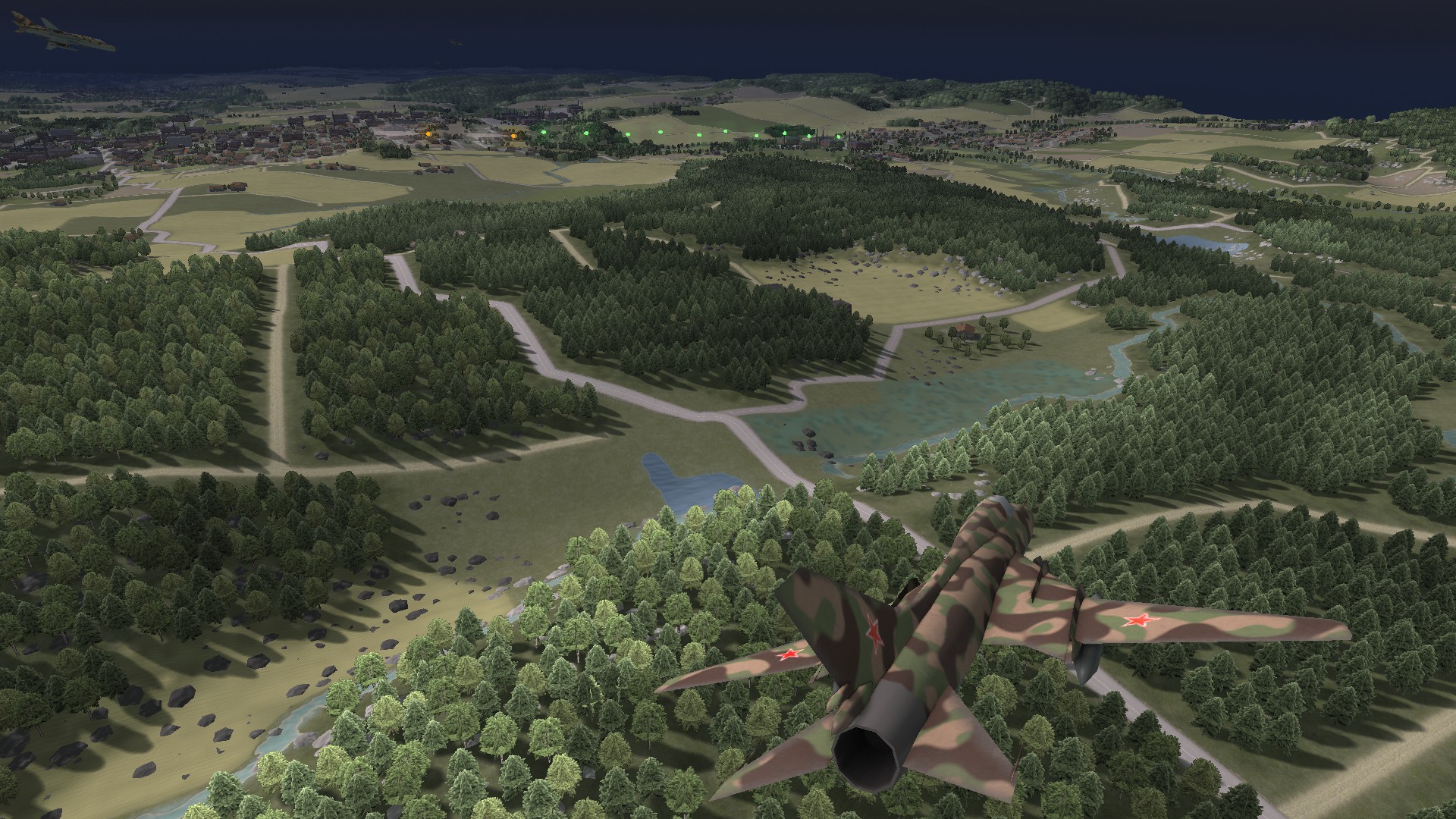Greetings Commanders!
This week, we will take a closer look at the latest improvements in air support, particularly in Close Air Support (CAS). Flying low wasn’t just an option — during the Cold War, it was considered the option if survival was the goal. Although Coalition aircraft transitioned from low to medium altitude within five days during Operation Desert Storm due to effective radar suppression, NATO planners deemed it unlikely for non-stealth aircraft to survive at medium altitude over Soviet-controlled territories. Consequently, most aircraft could not deliver weapons accurately from medium altitude, making low-level delivery the primary method for fixed-wing support in Armored Brigade. However, we felt there was still ample space for improvement.

Loft delivery
One such improvement is the low-altitude loft or toss bomb delivery. As the name suggests, the aircraft transitions from a low altitude to a higher one in a pull-up manoeuvre, lofting the ordinance at a pre-calculated point. The benefit of lofting is that it allows the aircraft to avoid directly flying over the target, thereby greatly minimising the risk of enemy air defences. Additionally, bombs can be released from great distances, enabling the aircraft to turn around before entering the dangerous zone.

The attacking aircraft approaches the target at a speed of up to 300 m/s and low altitude before entering a full-power climb at 30 degrees and releasing its bombs at an altitude of about 600 metres. The aircraft then dives back to a low altitude as soon as possible.
This new bombing profile was introduced to allow players to target specific fixed terrain points, rather than relying on semi-independent low-level strikes that search for and target hostile air and ground units. While this method makes aircraft highly resilient, except against highly capable SAM units like the SA-8 or fortunately positioned short-range systems, it is balanced by its poor accuracy. Also, since this question is certainly going to appear in the comments: helicopters will not perform loft delivery. While I personally believe the Soviets, in particular, would resort to this after taking heavy losses (as both Russians and Ukrainians have done in the ongoing conflict), pilots on both sides rarely, if ever, practised this inefficient method, which was primarily meant to deliver illumination rockets. However, this brings us to the next point.

Running Fire
Even if the fascinating evolution of helicopter tactics during the Cold War and the improvements we have planned for them deserve a separate DevDiary, it should be kept in mind that, in military terms, CAS is defined as air action by both fixed and rotary-wing aircraft against hostile targets in close proximity to friendly forces, which is why running fire is relevant to this discussion. In game terms, the introduction of running fire as a separate flight type was intended to expand the role of helicopters beyond the dominantly anti-armor and ambush-focused tactics of the late 1970s and 1980s. This new method allows for more dynamic engagements, such as gunships providing support during air assaults, offering additional flexibility.
It is best defined as a rapid "pop-up and peek" or "bump" while a helicopter has forward speed. Upon entering the map (or airspace), the helicopter climbs to low-level flight at maximum speed. The helicopter deploys countermeasures such as flares (if available) while maintaining speed, then initiates a slow, gentle dive upon locating the target. After completing the attack run, it performs an aggressive turn away from the target, reduces altitude using a sideslip-dive manoeuvre, and returns to terrain flight altitude to exit the danger zone. While this offers more responsive support, it also exposes the helicopters to exceptional risk, particularly when facing modern defences, so great care must be exercised.
More ordnance…and more space?
An attentive reader at this point might start wondering how this can be implemented on smaller maps, considering that both new methods require quite a lot of airspace to be performed correctly. We faced the same dilemma and came up with a clever solution. The airspace can now expand beyond the map edge, increasing the total on-map and off-map area to the current 15 x 15 km map size. This means that if the battle size is 15 x 15 km, there is no difference in how it works now. However, if the battle size is smaller, a buffer zone is added for aircraft.
Furthermore, to provide more tactical options and variety, we have introduced additional bomb weight categories (from 50 to 500kg, instead of the current 250kg equivalent). This gives you a wider array of choices when selecting ordnance, and more potential for modders. Rocket attacks have been significantly reworked to focus more on area effect. This change means that rocket strikes are now better suited for saturating larger areas with firepower, making them ideal for dealing with dispersed infantry or lightly armoured targets. The improved area effect allows you to disrupt and demoralise enemy forces more effectively.

Conclusion
CAS has played a critical role in military operations since its inception: it can halt enemy attacks, help create breakthroughs, destroy targets of opportunity, cover retreats, and guard flanks. To be most effective, CAS should be employed at decisive points in a battle and concentrated to apply maximum combat power and saturate enemy defences. It can be argued that aircraft have benefited the most from the new three-dimensional battlefield. Not only can you enjoy their aesthetic appeal, but they also come with significant functional improvements. These updates are just the beginning of what we have planned for Armored Brigade 2, as these reworks open the door to many more exciting possibilities. We’re eager to hear your thoughts and see how you use these new tools on the battlefield.
Stay tuned for more updates, and thank you for being part of the Armored Brigade community!










